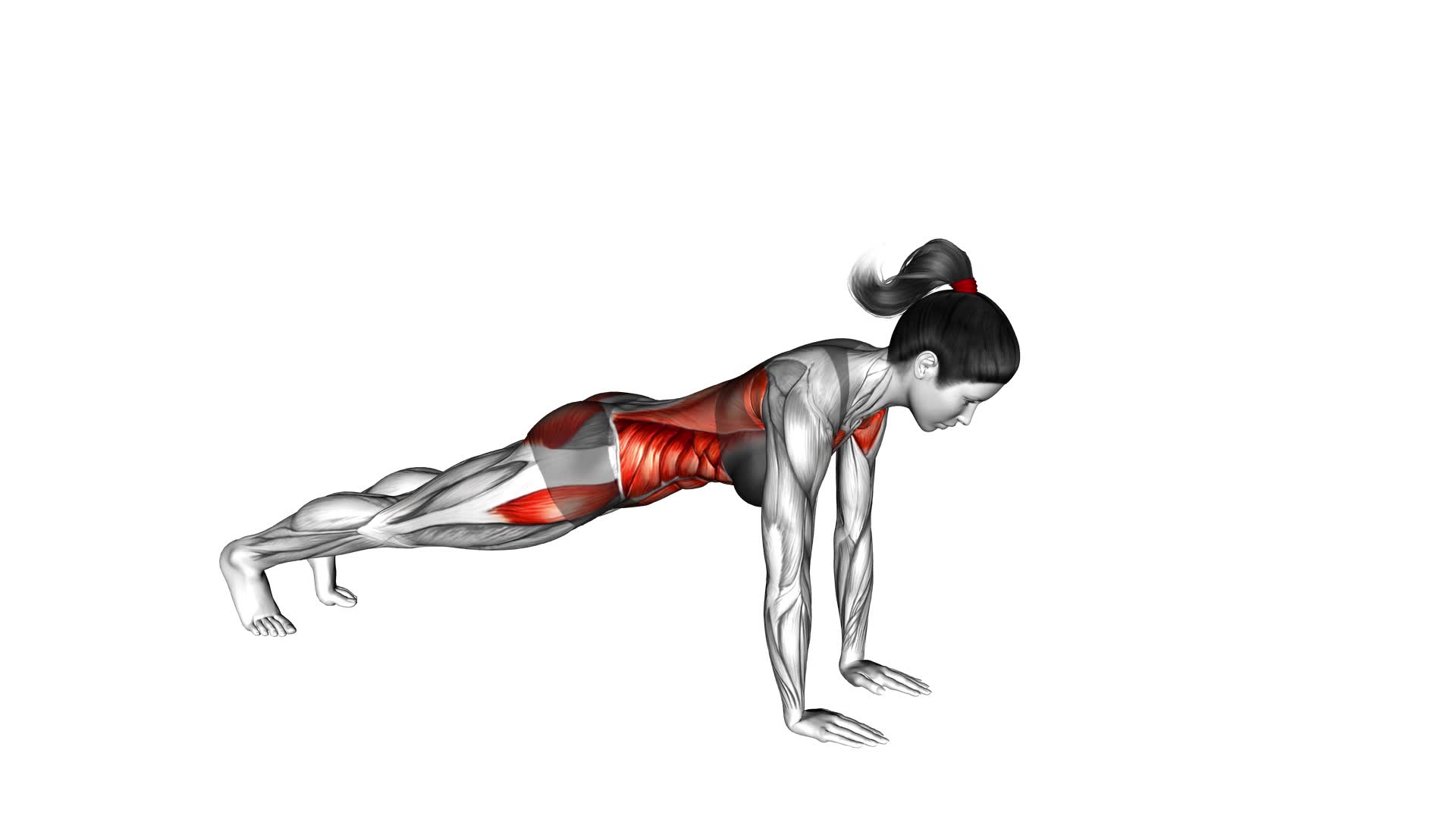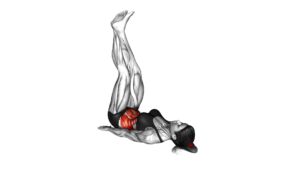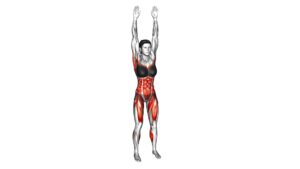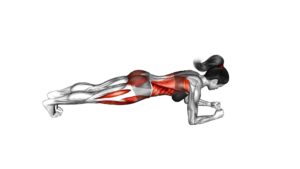Plank Arm Lifts (Female) – Video Exercise Guide & Tips

Are you looking for a way to strengthen your arms and core?
Watch This Exercise Video
Then you need to try plank arm lifts!
This exercise is perfect for females who want to tone their upper body.
In this article, we will provide you with a video exercise guide and helpful tips to ensure you perform plank arm lifts correctly.
Get ready to feel the burn and achieve your fitness goals!
Key Takeaways
- Plank arm lifts improve core strength and engage multiple muscle groups simultaneously.
- Proper form and technique, including hand placement and alignment, are crucial for effective plank arm lifts.
- Consistently practicing plank arm lifts at least three times a week can lead to increased strength and endurance in the core, shoulders, and arms.
- It is important to consult with a healthcare professional before starting any new exercise routine and to modify the exercise for any existing injuries or limitations.
Benefits of Plank Arm Lifts
You will experience various benefits from incorporating plank arm lifts into your workout routine. One of the main benefits is improved core strength. Plank arm lifts engage your entire core, including your abdominal muscles, obliques, and lower back. As you lift your arms one at a time, your core muscles work hard to stabilize your body and maintain proper alignment. This helps to strengthen your core muscles over time, leading to improved balance and stability in your daily activities.
Another benefit of plank arm lifts is improved shoulder stability. As you lift your arms, you're challenging the muscles around your shoulders and upper back. This helps to strengthen these muscles, which in turn improves the stability of your shoulder joints. Strong shoulder muscles are important for preventing injuries and maintaining good posture.
Incorporating plank arm lifts into your workout routine can also help to improve your overall body strength and endurance. This exercise targets multiple muscle groups, including your arms, shoulders, chest, and core. By regularly performing plank arm lifts, you'll build strength in these areas, allowing you to perform other exercises more effectively.
To maximize the benefits of plank arm lifts, make sure to maintain proper form throughout the exercise. Keep your core engaged, your back straight, and your shoulders relaxed. Start with a few repetitions and gradually increase the intensity as you get stronger. Remember to listen to your body and take breaks when needed.
Equipment Needed for Plank Arm Lifts
To perform plank arm lifts, you'll need minimal equipment. Here are the items you'll need:
- Exercise mat: A mat provides cushioning and support for your body during the exercise.
- Dumbbells: You can use dumbbells to add resistance and intensity to the exercise. Start with light weights and gradually increase as you get stronger.
- Choose a weight that challenges you but allows you to maintain proper form throughout the exercise.
- If you don't have dumbbells, you can use water bottles or cans as makeshift weights.
These are the basic equipment needed for plank arm lifts. However, there are variations of this exercise that may require additional equipment such as stability balls or resistance bands. These variations can help target specific muscle groups and add variety to your workout routine.
Now that you know the equipment needed, let's move on to the next section, where we'll discuss how to properly perform plank arm lifts and the core engagement techniques involved.
How to Properly Perform Plank Arm Lifts
To properly perform plank arm lifts, it's important to pay attention to the placement of your elbows and hands. Make sure that your elbows are directly under your shoulders and your hands are shoulder-width apart. This will ensure proper alignment and engagement of the muscles.
Additionally, focus on your breathing during the exercise, inhaling as you lower your arm and exhaling as you lift it, to maintain stability and control.
Elbows Vs. Hands Placement
Achieving proper elbow and hand placement is crucial for performing plank arm lifts correctly. To ensure that you're in the correct position, follow these guidelines:
- Elbows position:
- Place your elbows directly under your shoulders.
- Keep your elbows slightly bent to avoid locking them out.
- Hand grip:
- Place your hands shoulder-width apart.
- Keep your fingers spread wide for stability.
By maintaining the correct elbow and hand placement, you create a strong foundation for the exercise, allowing you to engage the targeted muscles effectively.
Now that you understand the importance of proper positioning, let's move on to the next section: breathing technique during exercise. Remember, breathing plays a vital role in maximizing your performance and getting the most out of your plank arm lifts.
Breathing Technique During Exercise
Maintain proper breathing technique to maximize your performance and get the most out of your plank arm lifts. Breathing correctly during exercise is crucial for muscle activation and overall effectiveness.
When performing plank arm lifts, inhale deeply through your nose as you lower your body down, and exhale through your mouth as you lift one arm off the ground. This breathing pattern helps engage your core muscles and stabilize your body.
It's essential to avoid holding your breath or breathing shallowly, as this can limit your muscle activation and hinder your performance. By focusing on your breath and maintaining proper technique, you can enhance the effectiveness of your plank arm lifts and achieve better results.
Now, let's move on to the next section and discuss common mistakes to avoid during plank arm lifts.
Common Mistakes to Avoid During Plank Arm Lifts
When performing plank arm lifts, it's important to be mindful of some common mistakes that can hinder your progress.
First, make sure your hand placement is correct by aligning your hands directly under your shoulders. This will help maintain stability and prevent strain on your wrists.
Additionally, engage your core throughout the exercise to ensure proper form and maximize the benefits.
Lastly, avoid overarching your lower back, as this can lead to discomfort and potential injury.
Incorrect Hand Placement
Positioning your hands incorrectly during plank arm lifts can lead to ineffective exercise execution and potential injury. To avoid these problems, follow these guidelines for proper hand placement:
- Hand Positioning:
- Place your hands directly under your shoulders, slightly wider than shoulder-width apart.
- Spread your fingers wide to create a stable base of support.
- Wrist Alignment:
- Align your wrists with your shoulders, keeping them in a neutral position.
- Avoid excessive bending or extension of the wrists, as it can strain the joints.
Lack of Core Engagement
To maximize the effectiveness of plank arm lifts, ensure proper engagement of your core muscles. Engaging the core is crucial because it helps stabilize your body and strengthens the upper body.
Many people make the mistake of neglecting their core during plank arm lifts, resulting in reduced effectiveness and potential injury. To engage your core, focus on pulling your belly button towards your spine and maintaining a straight line from your head to your heels.
Avoid sagging your hips or arching your back, as this takes away from the engagement of your core muscles.
Overarching the Lower Back
To avoid overarching your lower back during plank arm lifts, focus on maintaining a neutral spine throughout the exercise. It's important to use proper technique to prevent lower back strain and ensure the effectiveness of the exercise. Here are some tips to help you maintain a neutral spine:
- Engage your core muscles by pulling your belly button towards your spine.
- Keep your hips level and avoid letting them sag or lift too high.
- Imagine a straight line running from your head to your heels.
- Avoid rounding or arching your lower back.
- Keep your neck in line with your spine and avoid looking up or down.
By following these tips, you can prevent overarching and maintain a strong, stable position during plank arm lifts.
Now, let's move on to the next section to explore variations of plank arm lifts for progression.
Variations of Plank Arm Lifts for Progression
How can you enhance the effectiveness of Plank Arm Lifts?
One way is to incorporate progression techniques and variations into your routine. If you're a beginner, it's important to start with simpler variations to build strength and stability before advancing to more challenging ones.
One variation you can try is the Plank Arm Lift with Knee Tap. Start in a high plank position and slowly lift one arm off the ground, while simultaneously tapping the opposite knee to the ground. Alternate sides and focus on maintaining a strong core and stable body throughout the movement.
Another variation is the Plank Arm Lift with Leg Extension. Begin in a high plank position and lift one arm off the ground, while extending the opposite leg straight back. Hold for a few seconds and then switch sides.
By incorporating these variations into your routine, you can gradually increase the difficulty level of your Plank Arm Lifts and continue to challenge your muscles.
Now, let's move on to the next section where we'll discuss tips for getting the most out of your plank arm lifts.
Tips for Getting the Most Out of Your Plank Arm Lifts
To maximize the effectiveness of your Plank Arm Lifts, consistently practice this exercise at least three times a week. This will help you develop strength and endurance in your core, shoulders, and arms.
To ensure you're getting the most out of your Plank Arm Lifts, follow these tips:
- Maintain proper form:
- Start in a high plank position with your hands directly under your shoulders and your body in a straight line from head to toe.
- Engage your core and squeeze your glutes to keep your hips from sagging or lifting too high.
- Keep your neck in a neutral position and avoid straining your back or shoulders.
- Focus on muscle activation:
- As you lift one arm off the ground, concentrate on engaging your shoulder and arm muscles.
- Keep your core tight throughout the movement to enhance stability and prevent excessive rotation.
- Slowly lower your arm back to the ground with control, feeling the muscles working as you resist gravity.
Frequently Asked Questions
Can Plank Arm Lifts Help in Reducing Belly Fat?
Plank arm lifts are a great exercise for reducing belly fat. By engaging your core muscles, they help to strengthen and tone your abs.
This exercise also targets the muscles in your arms, shoulders, and back, giving you a full-body workout.
The benefits of plank arm lifts extend beyond just burning belly fat. They improve your posture, increase stability, and enhance overall strength.
Incorporate this exercise into your routine for a stronger, leaner midsection.
How Often Should Plank Arm Lifts Be Performed to See Results?
To see results from plank arm lifts, you should perform them regularly. The frequency of your plank arm lifts can vary depending on your fitness level and goals. However, it's generally recommended to do them at least 2-3 times per week.
Consistency is key! By incorporating plank arm lifts into your workout routine, you can strengthen your core, improve upper body strength, and enhance overall stability.
Can Plank Arm Lifts Be Modified for Beginners or People With Weak Wrists?
To modify plank arm lifts for beginners or those with weak wrists, try these modified variations and wrist-friendly alternatives.
Start by performing plank exercises on your knees instead of your toes to reduce wrist strain.
You can also use push-up handles or dumbbells to elevate your hands and decrease the angle at your wrists.
Remember to listen to your body and gradually increase the intensity as you build strength.
Are There Any Specific Breathing Techniques That Should Be Followed During Plank Arm Lifts?
During plank arm lifts, it's important to focus on your breathing. Take a deep breath in as you lower your body down and exhale as you lift your arm. This helps engage your core and maintain stability.
If you have weak wrists, you can modify the exercise by using dumbbells or push-up bars to elevate your hands and reduce strain. Remember to listen to your body and adjust as needed to ensure a safe and effective workout.
Can Plank Arm Lifts Improve Posture and Strengthen the Core Muscles?
Plank arm lifts, when done correctly, can improve posture and strengthen your core muscles. By engaging your abdominal muscles and stabilizing your spine, these exercises help to align your body and promote better balance.
Strengthening your core can also help prevent back pain by providing support for your spine. Incorporating plank arm lifts into your exercise routine can have a positive impact on your overall posture and core strength.
Conclusion
In conclusion, plank arm lifts are a fantastic exercise for strengthening your core and upper body muscles. By following the proper technique and avoiding common mistakes, you can maximize the benefits of this exercise.
Additionally, by incorporating variations and tips for progression, you can continue to challenge yourself and see even greater results.
So, give plank arm lifts a try and enjoy the benefits of a stronger and more toned physique.

Author
Years ago, the spark of my life’s passion ignited in my mind the moment I stepped into the local gym for the first time. The inaugural bead of perspiration, the initial endeavor, the very first surge of endorphins, and a sense of pride that washed over me post-workout marked the beginning of my deep-seated interest in strength sports, fitness, and sports nutrition. This very curiosity blossomed rapidly into a profound fascination, propelling me to earn a Master’s degree in Physical Education from the Academy of Physical Education in Krakow, followed by a Sports Manager diploma from the Jagiellonian University. My journey of growth led me to gain more specialized qualifications, such as being a certified personal trainer with a focus on sports dietetics, a lifeguard, and an instructor for wellness and corrective gymnastics. Theoretical knowledge paired seamlessly with practical experience, reinforcing my belief that the transformation of individuals under my guidance was also a reflection of my personal growth. This belief holds true even today. Each day, I strive to push the boundaries and explore new realms. These realms gently elevate me to greater heights. The unique combination of passion for my field and the continuous quest for growth fuels my drive to break new ground.







